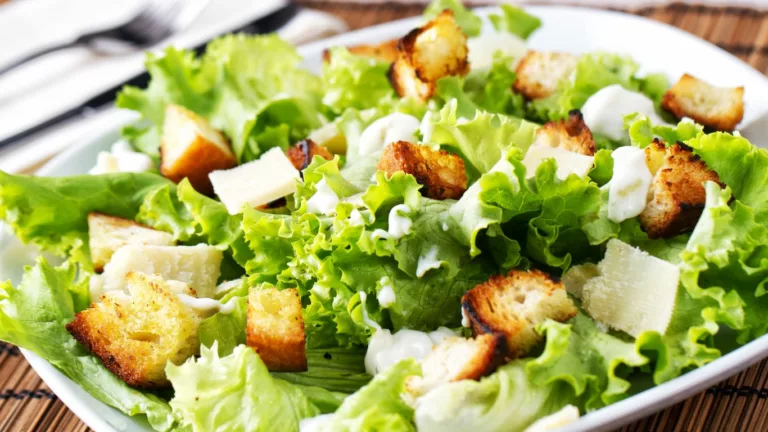Best Non-Citrus Fruits for Acid Reflux: 7 Delicious Options to Soothe Your Stomach
If you’re someone who’s dealing with acid reflux, you know how challenging it can be to navigate which foods to avoid. Acid reflux, often a condition associated with GERD (Gastroesophageal Reflux Disease), causes that uncomfortable burning sensation in your chest, commonly known as heartburn. Over time, managing your diet is key to preventing flare-ups and keeping symptoms under control. One of the best ways to do this is by incorporating fruits that are less likely to trigger reflux. If you’ve been looking for the best non-citrus fruits for acid reflux, you’re in the right place. I’ve been a medical assistant in a Gastroenterology Clinic for years, and I’ve seen first-hand how dietary adjustments, especially when it comes to fruit, can make a huge difference in improving the quality of life for patients suffering from acid reflux. So, let’s dive in and talk about some non-citrus fruits that are both delicious and gentle on your stomach.
The Importance of Choosing the Right Fruits for Acid Reflux
When it comes to managing acid reflux, it’s crucial to pay attention to the foods you consume. Certain fruits, especially citrus fruits, can trigger acid reflux symptoms due to their high acidity. Citrus fruits like oranges, grapefruits, lemons, and limes are notorious for causing irritation in the stomach lining, leading to heartburn or discomfort. On the flip side, there are many other fruits out there that are low in acid and can actually help soothe the digestive system, making them a better choice for individuals prone to reflux.
During my time working in the Gastroenterology Clinic, I’ve heard numerous patients express frustration with finding fruit options that don’t upset their stomachs. It’s easy to assume that fruit isn’t the best option when you’re dealing with acid reflux. But let me assure you, there are plenty of fruits you can enjoy without worrying about triggering an episode of heartburn. And the best part? These fruits are not only gentle on your stomach but also packed with vitamins, minerals, and fiber, offering a wide range of health benefits.
What Makes a Fruit “Safe” for Acid Reflux?
Before we get into the best non-citrus fruits for acid reflux, let’s first talk about what makes a fruit more likely to be gentle on your digestive system. Generally, fruits that are low in acid tend to be better tolerated by those with acid reflux. These fruits won’t increase stomach acid levels or irritate the esophagus, which is a common cause of acid reflux symptoms. Additionally, fruits with a higher water content are often easier to digest and less likely to cause discomfort.
Some key factors to keep in mind when choosing reflux-friendly fruits include:
- Low acidity: Acidic fruits like oranges and pineapples are often a no-go. Choose fruits with a neutral pH, such as bananas and melons.
- High water content: Fruits like watermelon and cantaloupe are hydrating and gentle on the stomach.
- Rich in fiber: Fiber helps with digestion and can prevent constipation, which might contribute to reflux symptoms.
Now that we’ve covered the basics of what makes a fruit ideal for acid reflux, let’s move on to some of the best non-citrus fruits that are not only tasty but can help you keep reflux symptoms at bay.
Best Non-Citrus Fruits for Acid Reflux
Here’s the good news: there are plenty of delicious, non-citrus fruits that are gentle on your stomach and great for your health. These fruits are perfect for individuals looking to manage their acid reflux while still enjoying a variety of sweet, nutritious options. Here are some of my top picks:
1. Bananas
Bananas are widely recognized as one of the best fruits for acid reflux. With their naturally low acidity, they are often recommended for those with sensitive stomachs. Bananas are not only easy to digest but they also provide a natural source of potassium, which can help balance stomach acids. Whether eaten on their own or added to smoothies, bananas make an excellent choice for reflux sufferers. From my experience, many patients find that bananas can even help coat the stomach lining, providing some relief from irritation.

2. Apples (Peeled)
While apples are typically mildly acidic, they are generally well-tolerated by people with acid reflux when eaten in moderation and peeled. The peel of the apple can sometimes cause irritation, so I always recommend peeling it if you have reflux symptoms. Apples are a good source of fiber, and their mild sweetness makes them a fantastic snack or addition to meals. Personally, I find that apples are a versatile fruit—perfect for pairing with other reflux-friendly foods like almond butter or oatmeal.
3. Melons (Watermelon, Cantaloupe, and Honeydew)
Melons are another great option for individuals with acid reflux. Watermelon, cantaloupe, and honeydew are high in water content, which helps keep the stomach cool and calm. These melons are low in acid and easy on the digestive system. Not to mention, they’re refreshing and hydrating, making them perfect for warm weather. I often recommend melons to patients, especially those who suffer from dehydration due to reflux medications. They provide an extra dose of hydration along with vitamins A and C.

4. Pears
Pears are another mild, non-citrus fruit that works wonders for those with acid reflux. Their natural sweetness and low acidity make them gentle on the stomach. Like bananas, pears are also high in fiber, which can aid in digestion. I’ve found that many of my patients enjoy pears both fresh and baked, especially when they’re looking for a comforting snack. Plus, pears are packed with antioxidants that can help protect the digestive system from inflammation.
5. Avocados
Although technically a fruit, avocados are often considered more of a vegetable. Regardless, they make an excellent choice for those with acid reflux. Avocados are not only low in acid but also packed with healthy fats that can help lubricate the digestive tract. I recommend avocados to my patients as part of a balanced diet since they help reduce inflammation and support overall digestive health. Whether mashed on toast or added to salads, avocados are both delicious and reflux-friendly.

Additional Non-Citrus Fruits That Can Help Manage Acid Reflux
Now that we’ve covered some of the best non-citrus fruits to consider for acid reflux, let’s dive into a few more options that can be equally beneficial. One of the things I love about working with patients dealing with acid reflux is seeing them discover new foods that are both gentle on their stomachs and delicious. Sometimes, the best fruits for reflux aren’t the ones you’d expect. In my experience, a little bit of creativity in the kitchen can go a long way when it comes to managing this condition.
6. Berries (In Moderation)
Now, I know what you might be thinking: “Berries, aren’t they acidic?” And you’re right—fruits like strawberries, raspberries, and blackberries do have some acidity. However, they’re usually much better tolerated when eaten in moderation and combined with other non-acidic foods. In my practice, I’ve noticed that some patients with acid reflux can enjoy berries as long as they don’t consume them in large quantities. Berries are loaded with antioxidants, which can help fight inflammation in the digestive tract, making them a worthwhile addition to your diet. I recommend mixing them with oatmeal or adding them to a smoothie with some bananas or avocados for a reflux-friendly treat.
7. Papaya
If you’ve never tried papaya before, it’s definitely worth adding to your fruit rotation. Papayas are incredibly soothing for the digestive system. They contain an enzyme called papain, which helps break down proteins and aids digestion. This can be especially helpful for those suffering from acid reflux since digestive issues often contribute to reflux episodes. From my experience, papaya can actually help reduce the symptoms of reflux and is a great option to include in your diet. Its mild sweetness and soft texture make it perfect for a snack or as part of a fruit salad.

8. Plums and Prunes
Plums and prunes are two fruits that don’t get as much attention when it comes to acid reflux, but they can be surprisingly beneficial. Both plums and prunes are rich in fiber, which helps promote healthy digestion. They also have a natural laxative effect, which can be helpful for those who suffer from constipation, a common issue for people with acid reflux. Prunes, in particular, are often recommended for individuals looking to improve digestion and alleviate reflux symptoms. Just be sure to enjoy them in moderation, as consuming too many at once could cause some discomfort.
9. Grapes
Grapes are another excellent fruit for individuals with acid reflux. They have a mild acidity level compared to citrus fruits, and their natural sweetness makes them a favorite among reflux patients. Grapes are also packed with water, which helps keep the body hydrated and supports digestion. I often recommend grapes to patients looking for a quick, reflux-friendly snack. You can eat them as they are, or even freeze them for a cool treat in the summer. Additionally, grape juice (without added sugars) can be a great option for a soothing beverage.
How to Incorporate Non-Citrus Fruits Into Your Diet
Now that we’ve covered some of the best non-citrus fruits for acid reflux, you might be wondering how to incorporate these fruits into your daily meals. The good news is, there are endless ways to enjoy these fruits while avoiding reflux flare-ups. It’s all about balance and being mindful of your body’s signals.
As someone who works closely with patients in a Gastroenterology Clinic, I’ve found that meal planning and preparation make a world of difference when managing acid reflux. Simple swaps, such as using non-citrus fruits in your smoothies or having a fruit salad with bananas, pears, and melons, can be an easy way to make your diet more reflux-friendly. Here are a few ideas I’ve shared with patients to help them get started:
- Breakfast Boost: Start your day with a soothing, reflux-friendly smoothie. Combine bananas, blueberries, and spinach for a nutrient-packed drink that’s gentle on your stomach.
- Snack Smart: Pack a small bowl of grapes or a sliced pear for a quick and satisfying snack during the day. These fruits are easy to take on the go and won’t trigger reflux.
- Fruit Salad: Make a simple fruit salad with papaya, watermelon, and cantaloupe. You can add a sprinkle of cinnamon for extra flavor without adding any acidity.
- Lunch or Dinner Side: Try pairing grilled chicken or fish with a side of mashed avocado or a pear salad. The creamy texture of avocado pairs beautifully with lean protein.
One of the things I tell patients is that it’s not just about avoiding certain foods—it’s about finding new ones that work for your body. You might even find that some of the fruits listed above are your new go-to options. The key is to pay attention to how your body responds and adjust your diet as needed.
Other Tips to Manage Acid Reflux Symptoms
In addition to choosing the best non-citrus fruits, there are a few other lifestyle changes that can help manage acid reflux and improve overall digestive health. While diet plays a huge role, it’s also important to consider factors like meal timing, portion sizes, and stress levels. I’ve seen many patients at the clinic benefit from making small changes to their daily habits, and it’s often those adjustments that make a significant difference in preventing reflux symptoms.
Here are a few more tips I recommend to patients for managing acid reflux:
- Avoid large meals: Eating smaller, more frequent meals throughout the day can help prevent excess stomach acid production.
- Don’t lie down immediately after eating: Wait at least 2-3 hours after a meal before lying down to allow your body time to digest.
- Manage stress: Stress can exacerbate acid reflux, so practicing stress-reducing activities like yoga, meditation, or even a short walk can help.
- Elevate your head while sleeping: Sleeping with the head of your bed raised can prevent stomach acid from rising into your esophagus while you sleep.

By combining these tips with a diet rich in non-citrus fruits and other reflux-friendly foods, you can take control of your acid reflux symptoms and improve your overall quality of life. Remember, it’s about finding what works best for your body and making gradual changes that support your health and well-being.
Final Thoughts
Acid reflux doesn’t have to control your life. By focusing on foods that are gentle on your digestive system, you can enjoy a wide variety of fruits and other nutritious options without worrying about flare-ups. Whether you’re enjoying a banana, a slice of watermelon, or a handful of grapes, these non-citrus fruits are not only delicious but also provide essential nutrients that support your overall health. With a little planning and a bit of experimentation, you’ll soon discover a whole new world of reflux-friendly foods that you can enjoy.
How to Create a Reflux-Friendly Meal Plan
Now that we’ve discussed some of the best non-citrus fruits for acid reflux, it’s time to put everything together and create a meal plan that works for you. I’ve had the privilege of working with countless patients who struggle to find meals that won’t trigger acid reflux symptoms, and one of the best ways to tackle this is by preparing meals that focus on reflux-friendly foods. The beauty of a well-planned meal is that it not only helps you manage acid reflux, but it also provides you with a balanced, nutrient-rich diet that supports overall health.
When you’re crafting your meal plan, think about variety. Include a combination of non-citrus fruits, whole grains, lean proteins, and healthy fats. Also, remember that portion control is important—eating smaller meals more frequently can reduce pressure on your stomach and lower the chances of reflux. After working with so many patients over the years, I’ve seen how planning ahead can reduce the stress of last-minute meal choices and make it easier to stick to a reflux-friendly diet.
Breakfast Ideas for Acid Reflux
Breakfast is a great time to start your day on the right foot. Since acid reflux can sometimes be worse in the morning (after lying down all night), it’s important to choose breakfast options that are gentle on your stomach. Here are a few breakfast ideas that I often recommend:
- Banana & Oatmeal Bowl: Start your day with a warm bowl of oatmeal topped with sliced banana and a sprinkle of cinnamon. The oats are soothing for your stomach, and the banana adds a natural sweetness without causing irritation.
- Avocado Toast: Spread mashed avocado on whole grain toast. Avocados are a great source of healthy fats and will keep you feeling full without triggering acid reflux.
- Apple and Almond Butter: Slice a peeled apple and dip it in almond butter. This simple snack is both satisfying and easy on your digestive system.
Lunch and Dinner Options
For lunch and dinner, it’s important to focus on lean proteins, healthy fats, and non-acidic fruits and vegetables. I often suggest incorporating a variety of foods to keep meals exciting while still adhering to reflux-friendly guidelines. Here are some ideas to get you started:
- Grilled Chicken with Sweet Potatoes: Grilled chicken is a great source of lean protein, and sweet potatoes are a mild, non-acidic vegetable. This combo is filling and gentle on the stomach.
- Salmon Salad: Salmon is high in omega-3 fatty acids, which have anti-inflammatory properties. Toss it with some mixed greens, avocado, and a light olive oil dressing.
- Rice & Vegetable Stir-Fry: Brown rice is a whole grain that’s easy to digest. Pair it with non-acidic vegetables like zucchini, carrots, and spinach, and add some grilled chicken or tofu for protein.

Snacks and Desserts That Won’t Trigger Reflux
Snacking can be a bit tricky when you have acid reflux, as it’s easy to reach for something that could irritate your stomach. But there are plenty of snacks and desserts that you can enjoy without worrying about triggering your reflux. I’ve worked with so many patients who are amazed at how tasty and satisfying these snacks can be. Here are a few suggestions:
- Pear and Cottage Cheese: The natural sweetness of a pear paired with protein-rich cottage cheese makes for a delicious, reflux-friendly snack.
- Rice Cakes with Almond Butter: Rice cakes are light and easy on the stomach, and a smear of almond butter adds a healthy fat that can help keep you full.
- Frozen Banana Bites: Slice a banana and dip the slices in dark chocolate. Freeze them for a cool treat that’s gentle on your digestive system.
Additional Tips for Managing Acid Reflux Symptoms
Along with choosing reflux-friendly foods, there are other strategies you can incorporate into your daily routine to help manage acid reflux symptoms. From my years of experience in the gastroenterology field, I’ve learned that small changes in lifestyle and habits can make a world of difference. Here are a few additional tips that can help:
1. Eat Smaller, More Frequent Meals
One of the most effective ways to reduce acid reflux symptoms is by eating smaller meals throughout the day. Large meals can put pressure on your stomach, causing acid to back up into your esophagus. I recommend aiming for five or six small meals per day instead of the traditional three large meals. This can help keep your stomach from getting too full and reduce the risk of reflux.
2. Avoid Lying Down After Eating
It’s tempting to relax after a meal, but lying down too soon after eating can exacerbate reflux symptoms. Try to wait at least 2 to 3 hours after eating before lying down or going to bed. I always advise my patients to go for a gentle walk or engage in light activities if they feel the urge to rest after a meal. This helps with digestion and minimizes the chance of acid reflux.
3. Maintain a Healthy Weight
Excess weight can put pressure on your stomach, leading to more frequent acid reflux. Maintaining a healthy weight through regular exercise and balanced eating can help reduce your symptoms. In my experience, even a modest weight loss can make a significant impact on acid reflux symptoms.

References
For further information on managing acid reflux and understanding the relationship between diet and digestive health, I recommend checking out trusted resources such as WebMD and Mayo Clinic. These sources provide evidence-based advice that can help guide you through managing acid reflux effectively.
Disclaimer
While the information provided in this article is based on my professional experience as a Medical Assistant in a Gastroenterology Clinic, it is important to consult with a healthcare provider before making significant changes to your diet or lifestyle, especially if you have been diagnosed with a medical condition. Everyone’s body is different, and what works for one person may not work for another. Always seek personalized advice from your doctor or a qualified healthcare professional.

Camellia Wulansari is a dedicated Medical Assistant at a local clinic and a passionate health writer at Healthusias.com. With years of hands-on experience in patient care and a deep interest in preventive medicine, she bridges the gap between clinical knowledge and accessible health information. Camellia specializes in writing about digestive health, chronic conditions like GERD and hypertension, respiratory issues, and autoimmune diseases, aiming to empower readers with practical, easy-to-understand insights. When she’s not assisting patients or writing, you’ll find her enjoying quiet mornings with coffee and a medical journal in hand—or jamming to her favorite metal band, Lamb of God.






